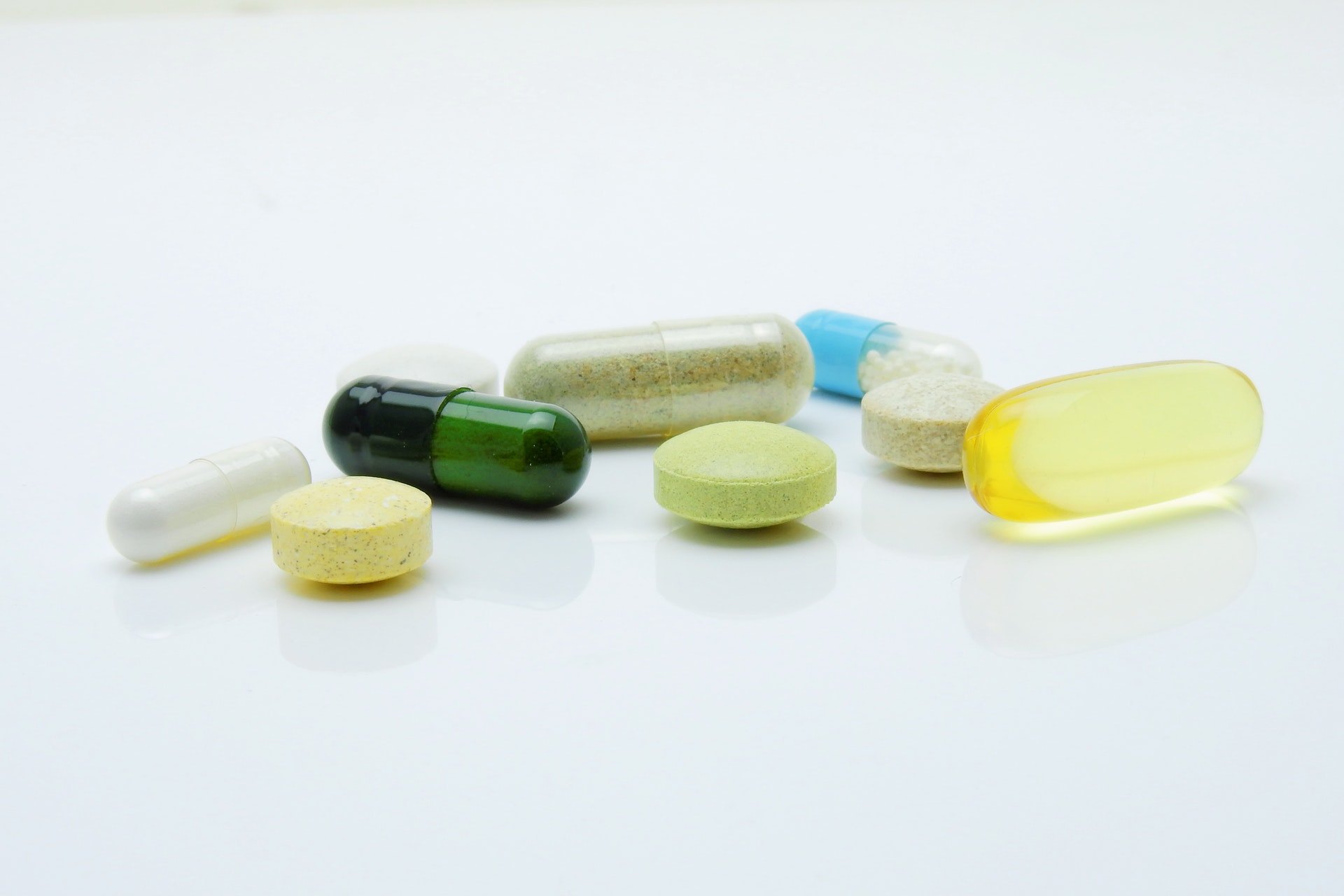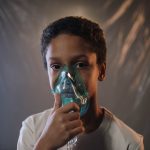The famous nickname for the world’s most profitable pharmaceutical companies—Big Pharma—often inspires admiration or instills fear and envy. Equally formidable, these pharmaceutical statistics are not for the faint-hearted, for they discuss trillions of dollars.
In technical terms, the pharmaceutical industry can be as light as a milligram and as heavy as a quarter of the annual US budget. The occupational diversity of the pharma business and the sovereignty of its influence on healthcare notably impact the lives of everyone.
The pharma industry creates new drugs, and it goes both above and under the line to marketize them. They pay billions in lawsuit-fines, and yet the stock exchange waits patiently at the end of each quartal, craving for its stocks.
Further reading will reveal the latest stats and facts about the pharmaceutical industry, whose impact moves both molecules and governments.
Top 10 Pharmaceutical Industry Stats and Facts
- In 2018, the estimated total worth of Big Pharma was $1.11 trillion.
- The US market contributes 56.6% to the global sales of the best-selling drugs.
- 85% of all drug exports come from only 15 countries.
- Aspirin sales acquire half a billion dollars every year.
- Top 10 best-selling drugs in 2018 were approximately worth $87 billion.
- The pharmaceutical industry of Japan holds 10% of the world market share.
- Top 3 wholesalers in the US account for 90% of the country’s drug-trade revenue.
- The WHO pharmacy workforce statistics state that in 2017, there were 4,067,718 pharmacists worldwide.
- In 2018, the top 10 pharma companies generated $1,845 trillion on the stock exchange.
- The US drug companies spend more on advertising than on R&D.
Global Pharma Stats
1. It is estimated that in 2020, the pharmaceutical industry will reach the total market value of $1.43 trillion.
(Proclinical)
The estimated total worth of Big Pharma in 2018 was an astounding $1.11 trillion. However, due to the research-driven production of pharmaceuticals, statistics predict a 29% increase in the current year.
With its $341.1 billion of pharma capital, the US holds the largest share of the global market, followed by East Asian and European countries.
2. 85% of total drug exports come from only 15 countries.
(WorldsTopExports)
Drug production sometimes exceeds a country’s needs for medication, and the resulting drug surplus fuels exports. The export volume is conditioned with the production capacity and logistical infrastructure. European countries are the leaders in drug export, as supported by pharmaceutical industry statistics from 2018.
List of countries by drug export revenue (and the market share of total drugs and medicines exports):
- Germany – $62.3 billion (16.8%)
- Switzerland – $45.3 billion (12.2%)
- Belgium – $27.8 billion (7.5%)
- France – $25.9 billion (7%)
- United States – $22 billion (5.9%)
- Ireland – $21.7 billion (5.8%)
- United Kingdom – $19.7 billion (5.3%)
- Italy – $19.6 billion (5.3%)
- Netherlands – $16.8 billion (4.5%)
- India – $13.1 billion (3.5%)
3. According to pharmacy statistics, EU countries contribute to 22% of the world’s pharmaceutical sales.
(Statista)
It is projected that by 2023, the total revenue of pharmaceutical manufacturing in Austria will reach $6.876,2 million.
Drug production in the Netherlands is expected to climb to $7.076,4 billion by 2023.
From 2014 to 2018, some European countries recorded a massive increase in drug exports. Denmark experienced the most fruitful drug export increment of 293.4%, followed by Switzerland (26.7%), and Germany (20%).
4. Statistics in the pharmaceutical industry put two Swiss drug companies among the top ten in the world.
(Investing News)
Roche and Novartis are two Swiss-based pharmaceutical titans that cashed in $58.1 billion and $53.2 billion in 2018, respectively. They are also considered as top companies in Switzerland and employ more than 160,000 people.
5. Japan has the fastest growing generic drug sector in the world.
(CPhI)
Japan’s aging population influences its overall healthcare expenditure policy. Consequently, the Pharmaceutical and Medical Devices Agency of Japan encouraged the initiative for faster approval of generics on the market.
According to the East Asian pharma industry statistics, the volume share of generics (as opposed to branded drugs) on the Japanese market will reach 80% by 2020.
6. More than 90% of medicines registered in China are generics.
(Statista)
With the astonishing number of 5,000 generic manufacturing companies, China is one of the world leaders in generic drug production. The total revenue of China’s pharmaceutical industry in 2018 was close to $380 billion.
(CPhI, The Motley Fool))
With their fearless dedication to R&D, Japan’s drug industry is the third-largest in the world, behind the US and China. The Pharmaceutical industry statistics from 2015 estimated the value of Japanese drug companies for approximately $94 billion, which is forecasted to rise to $109 billion by 2026. It looks like Japan is more than ever dedicated to advancing in the field of pharmaceuticals.
8. In 2019, self-medication products accounted for 24% of revenue in Italian pharmacies.
(Statista)
According to interesting facts about pharmacy, Italian pharmacies approach the market with rich assortments and their “patient first” policies. The most significant part of the revenue still comes from prescription drugs (48%). However, dermo-cosmetics (7.4%) and over-the-counter products (24%) are becoming more lucrative than ever.
Pharmaceutical Statistics of the Best-Selling Drugs
9. Americans take 29 billion aspirin tablets per year.
(Washington Post, AHA Journals, Bayer Annual Report)
Renown for its pain-relieving qualities, aspirin is also on the WHO’s list of essential medications for cardiovascular health. About 40,000 tons of aspirin are produced annually in factories around the world. Bayer reported $39.5 billion of revenue in 2018, out of which aspirin sales accounted for half a billion.
10. The most frequently prescribed drug is a thyroid hormone.
(Medscape)
According to elemental pharmacology facts, we treat some of the most common health issues with the most profitable of drugs. People use them for the treatment of various indispositions, such as high blood pressure, high cholesterol levels, asthma, indigestion, diabetes, and neuropathy.
The most-prescribed drugs in the world (with annual prescription revenue in 2018):
- Synthroid (levothyroxine) – $21.5 million
- Crestor (rosuvastatin) – $21.4 million
- Ventolin HFA (albuterol) – $18.2 million
- Nexium (esomeprazole) – $15.2 million
- Advair Diskus (fluticasone) – $13.7 million
- Lantus Solostar (insulin glargine) – $10.9 million
- Vyvanse (lisdexamfetamine) – $10.4 million
- Lyrica (pregabalin) – $10.0 million
- Spiriva Handihaler (tiotropium) – $9.6 million
- Januvia (sitagliptin) – $9.1 million
11. Recent statistics about pharmaceutical drugs place biosimilars as the most lucrative in 2020, with the expected market value of $26.55 billion.
(AlliedMarketResearch)
In 2015, the biosimilars’ market value was at $2,55 billion. Calculated for the period between 2015 and 2020, the Compound Annual Growth Rate (CAGR) for biosimilars was 49.1%, which forecasts an impressive increase.
12. In 2018, the top 10 best-selling drugs accounted for approximately $87 billion in revenue.
(Pharmaceutical Technology, Pharmaintelligence )
Most profitable prescription drugs reach the top of the list for a reason – they represent the best modern pharmacology has to offer. According to the leading pharmacy facts, they show significant benefits, with a low incidence of adverse effects.
The 10 best-selling drugs in the world (by revenue in 2018):
- Humira (adalimumab) by AbbVie – $19.9 billion
- Eliquis (apixaban) by Bristol-Myers Squibb and Pfizer – $9.9 billion
- Revlimid (lenalidomide) by Celgene – $9.7 billion
- Keytruda (pembrolizumab) by Merck & Co – $7.2 billion
- Enbrel (etanercept) by Amgen, Pfizer, and Takeda – $7.1 billion
- Herceptin (trastuzumab) by Roche – $7 billion
- Avastin (bevacizumab) by Roche – $6.9 billion
- Eylea (aflibercept) by Regeneron – $6.8 billion
- Opdivo (nivolumab) by Bristol-Myers Squibb – $6.7 billion
- Xarelto (rivaroxaban) by Bayer – $6.5 billion
Top Pharmaceutical Companies Statistics
13. In 2018, the top 10 pharma companies generated a $1,845 trillion market cap on the stock exchange.
(GEN)
These Big Pharma companies are constantly paying huge lawsuit settlements, and yet they are all the fuss on Wall Street. Regardless of the media slander, the pharma industry is still a very safe bet.
The 10 pharmaceutical companies with the highest market capitalization in 2018:
- Johnson & Johnson ($345.907 billion)
- Novartis ($226.539 billion)
- Merck & Co. ($216.409 billion)
- Roche ($211.513 billion)
- Pfizer ($205.039 billion)
- AbbVie ($128.791 billion)
- AstraZeneca ($124.44 billion)
- Sanofi ($114.421 billion)
- GlaxoSmithKline ($110.224 billion)
- Eli Lilly ($108.677 billion)
14. Big Pharma statistics report that in 2018, Johnson & Johnson acquired $81,581 billion in revenue worldwide.
(J&J)
Johnson & Johnson has been recording a continuous financial increase for decades now. With its 4.71% of annual growth, this company is one of the most stable ones on the market.
In 2018, its earnings on the US and European markets were $41.9 billion and $18.8 billion, respectively. The Financial Times Magazine appraised its total market value for $343.9 billion in 2019.
15. In 2018, Roche spent $11 billion on R&D, according to the statistics in biopharmaceutical research.
(Roche)
Big Pharma invests substantial amounts in R&D in comparison to other industries.
With a revenue of $56.8 billion in 2018 and a steady annual growth of 7%, Roche is the leader in pharmaceutical innovations. The pharmaceutical division contributes to 77.5% of its annual revenue, while the diagnostic department adds to the remaining 22.5%.
16. Johnson & Johnson spent $30.12 million US dollars on marketing in 2017.
(Statista)
The second largest investment was $22.5 million, and it was made by Eli Lilly in 2017. In the same year, the global pharma industry advertisement costs amounted to $6.4 billion.
When it comes to pharmaceutical advertising, statistics reveal that approximately one-third of all Big Pharma income goes to the marketing department.
17. Five American companies are among the world’s top drug exporters.
(WorldsTopExports)
The 10 largest pharmaceutical exporters in the world:
- Pfizer (United States)
- Novartis (Switzerland)
- Sanofi (France)
- Roche Holding (Switzerland)
- Merck & Co. (United States)
- GlaxoSmithKline (United Kingdom)
- AstraZeneca (United Kingdom)
- Eli Lilly & Co. (United States)
- Abbott Laboratories (United States)
- McKesson (United States)
18. According to pharmacy statistics review, Big Pharma profits for prescription drugs are expected to reach $610 billion by 2021.
(DrugWatch)
Pharmaceutical companies aided the global lifespan increase in the 20th century, and this trend is bound to continue. With the aging of the world’s population, new and more efficient medications are becoming a necessity. Big Pharma companies are determined to meet every challenge on the market. Given the rising prices of drugs in the US, their profits are about to rise as well.
Americans spend approximately $450 on prescription drugs annually. With an estimated 20% in pure profits, this industry remains one of the most profitable on the market.
Pharmaceutical Statistics in the US
19. In 2018, Pfizer’s Rx sales in the US reached approximately $53.65 billion.
(Pfizer)
Pfizer is one of the global leaders in pharmaceutical innovations and market-driven operations. In terms of profit, it was the most successful company in 2018, followed by Novartis ($51.90 billion), Roche ($45.59 billion), Johnson & Johnson ($40.73 billion), and Sanofi ($39.29 billion).
20. Big Pharma scored at the bottom of the list of the 25 most influential industries in America.
(Gallup)
The unpopularity of Big Pharma is considered common pharmacy trivia. However, according to an annual survey from 2019, Americans dislike it more than the healthcare industry, the US government, and the oil and gas industry.
21. FDA monitors more than $1 trillion worth of products.
(JABFM)
The sole purpose of this agency is to assess and control the quality, safety, and efficiency of drugs, cosmetics, and food products. In other words, the FDA regulates 25% of the annual expenses of all Americans.
22. Cardiovascular diseases, infections, and pain are the most treated conditions, according to the latest US pharmaceutical industry statistics.
Here are the most frequently prescribed drugs in the US in 2018:
- Atorvastatin
- Levothyroxine
- Lisinopril
- Gabapentin
- Amlodipine
- Albuterol
- Hydrocodone/Acetaminophen
- Omeprazole
- Amoxicillin
- Losartan
23. Of the 200 most prescribed drugs in the US, 166 are oral medications.
(PubMed)
Tablets and capsules are the most prevalent forms of medicines as they improve adherence. Following the oral formulations, among the top 200 are inhalants, IV infusions, intramuscular injections, IV injections, liquids, subcutaneous injections, ophthalmological preparations, nasal products, topicals, transdermals, and vaginal products.
24. One of the top pharmaceutical industry facts is that the US market contributes 56.6% to the global sales of the best-selling drugs.
(Pharmaintelligence)
Conversely, European and Asian markets are cost-conservative and more saturated with generics. The US market is insurance-centered and backed up by substantial capital coming from originators. Consequently, most of the world’s pharmaceutical companies launch their novelty drugs in the US first.
25. In 2015, the FDA recalled 2,028 products.
(FDA)
When a manufacturer pulls a drug off the market, it experiences a decrease in both revenue and customer satisfaction levels. This is one of the major pharmaceutical issues, which imposes unnecessary expenses on the core pharma business. Furthermore, the recall costs disrupt overall business operations by 49%, while the recalled products account for only 10%. In 2015, the FDA recalled 39 OTC products and 195 prescription drugs.
26. The US is the world leader in new-drug research.
(Statista)
Between 2013 and 2017, Big Pharma in the US created the most significant number of new drugs and compounds. However, not all of the candidates reached the counter. When it comes to these pharmaceuticals, statistics show that approximately one-third of all drugs fail between the first two phases of clinical trials. In the end, only 10% of them get FDA approval.
27. Top 3 wholesalers in the US account for over 90% of the total drug trade in bulk.
(MDM)
Wholesalers work as an intermediary between the drug manufacturer and the pharmacy. The three leading pharmaceutical wholesalers in the US are AmerisourceBergen Corporation, Cardinal Health, Inc., and McKesson Corporation. The estimated revenue for the three biggest drug traders in the US was $425.1 billion in 2018.
28. Statistics for the pharmaceutical industry in 2019 reveal that CDER approved 48 novelty drugs in the US.
(FDA)
Center for Drug Evaluation and Research (CDER) is an FDA-regulated division that deals with drug approvals, and, in the last year, it approved a record number of novelty drugs. Novelty drugs are new molecular entities that have the potential to treat diseases with a new pharmacological mechanism.
Twenty of the newly approved products are considered first-in-class drugs; hence similar agents have never been used therapeutically. Some of the new medicines treat conditions such as postpartum depression (brexanolone), or metastatic bladder cancer (erdafitinib).
29. New pharmaceutical corruption statistics reveal that Big Pharma lobbyists pay frequent visits to government officials.
(Bloomberg)
According to the disclosed data, from 1998 to 2016, Big Pharma spent more than $3 billion on lobbying expenses. This amount supersedes any other industry.
Since the adoption of the Affordable Care Act, pharmaceutical companies spent even more. In 2016 alone, pharmaceutical companies spent about $246 million on lobbying.
30. Since 2010, the leading pharma companies paid more than $10 billion in fines.
(The US Department Of Justice)
The most massive lawsuit was led against GlaxoSmithKline in 2012, which paid $3 billion to the government in that year. In one of the most significant trials in recent pharmacy history, the facts against GSK unveiled the unethical nature of the industry.
GSK was responsible for off-label promotion, failure to disclose safety data, paying kickbacks to physicians, and making false and imposing misleading statements about their products.
31. The US drug companies spend more on advertising than on R&D.
(Science Daily)
According to a study from 2014, the US pharma companies spent 24.4% of their total revenue on promotion, versus 13.4% for R&D.
32. Although it’s hard to assess the number of pharmaceutical deaths, statistics reveal that 68% involve prescription medication.
(CDC)
From 1999 to 2017, more than 702,000 people died from a drug overdose, out of which two-thirds relate to the use of prescription medications.
The most frequently used drugs are opioid narcotics, prescribed for severe pain, and sedative-hypnotics, prescribed for sleeping disorders. Additionally, a growing number of fatal gastrointestinal bleedings, due to the misuse of non-steroidal anti-inflammatory drugs, was recorded in 2017.
Furthermore, the CDC claims that drug overdose was the leading cause of injury-related deaths in 2017 and 2018.
Interesting Pharmacy Facts
33. In 2017, there were 4,067,718 licensed or registered pharmacists worldwide, with 2,824,984 actively practicing.
(International Pharmaceutical Federation)
According to an international survey that accounted for 75% of the world’s population, in 2017, there were 1,580,575 registered pharmacies around the globe. Additionally, women comprise 59% of the pharmaceutical workforce.
34. In 2018, the leading pharmacy chains in the US recorded a significant increase in prescription drug revenue.
(Statista)
Retail pharmacies are the places where drug monetization occurs. Recent retail pharmacy statistics show that they account for a large piece of the entire pharma capital.
The five most successful pharmacy chains in the US (along with their revenues in 2018):
- CVS Health ($102.8 billion)
- Walgreens Boots Alliance ($74.4 billion)
- Cigna/Express Scripts, inc. ($46.5 billion)
- UnitedHealth Group ($25.9 billion)
- Walmart ($20.5 billion)
35. CVS Health is the largest pharmaceutical retail company in the US.
(Statista)
They operate in about 9,750 stores nationwide, centered mostly in large commercial areas. CVS pharmacy statistics reveal that their pharmacies account for approximately 24% of all prescription-fills in the US.
36. Vacancy rates for pharmacists in the UK increased by 8.1% in 2019.
(Pharmaceutical Journal)
Although the predictions implied the low need for pharmacists in the UK for the next 20 years, the vacancy rates for pharmacy staff continue to rise. In March 2019, the officials announced that urgent actions are required to boost pharmacy training plans to meet the NHS’s long-term expectations.
The UK follows the global drug trends, which imply more demand for medications and operating staff in a pharmacy. Interesting facts in the UK’s health sector describe a 28% increase in the number of realized prescriptions per pharmacy from 2006 to 2018.
37. The number of mail-order pharmacies in England increased by 623% over a ten-year period.
(Statista)
Having your medication delivered to your front door is convenient as it sounds. According to the data, there has been a dramatic increase for this practical service in the UK since 2008.
38. Pharmacists in the US make $126,120 per year ($60.64 per hour).
(BLS)
According to the current pharmaceutical statistics, pharmacy jobs are more likely to be given to technicians than to licensed pharmacists. According to the Bureau of Labour Statistics, there wasn’t a significant change in the demand for pharmacists for the period between 2008 and 2018.
There are approximately 67,000 pharmacies in the US, and they all face tough times in the years to come. The biggest threat for them on the US market is the inclusion of Amazon in the pharmaceutical business.
39. The average annual salary for a pharma sales rep is $138,150.
(TopMastersInHealthcare)
When it comes to becoming a pharmaceutical sales rep, the Bureau of Labor Statistics predicts stable job opportunities. With a mean base salary of $90,862 and with room for improvement, a pharma sales rep can earn up to $155,000 a year. Representatives who advance into executive positions make up to $200,455 on average.
40. From 2006 to 2013, 1,514 new community pharmacies opened in the UK.
(Statista)
The overall lifespan increase and the profitability of the pharma business created a rapid boost in demand for community pharmacies in the UK. However, this trend endured until 2018, when the market became saturated. According to the UK pharmaceutical industry employment statistics, there were 11,539 pharmacists in the country in 2019.
Conclusion
The pharmaceutical industry is one of the largest and most profitable in the world. It also affects the lives of everyone on the planet.
Pharmaceutical companies invent new drugs and educate healthcare professionals on how to use them. They create and successfully monetize new sales strategies. And what’s more, they pay billions of dollars in fines and still stand among the top businesses in the world.
Despite the major kickbacks over the years, pharmaceutical statistics unequivocally show that the future predicts even greater prosperity for this huge industry.
Sources:
- AHA Journals
- AlliedMarketResearch
- Bayer Annual Report
- Bloomberg
- BLS
- CDC
- CPhI
- DrugWatch
- FDA
- FDA
- Gallup
- GEN
- International Pharmaceutical Federation
- Investing News
- J&J
- JABFM
- MDM
- MedScape
- Pfizer
- Pharmaceutical Journal
- Pharmaceutical Technology
- PharmaIntelligence
- Proclinical
- PubMed
- Roche
- Science Daily
- Statista
- Statista
- Statista
- Statista
- Statista
- Statista
- The Motley Fool
- The US Department Of Justice
- TopMastersInHealthcare
- Washington Post
- WorldsTopExports



